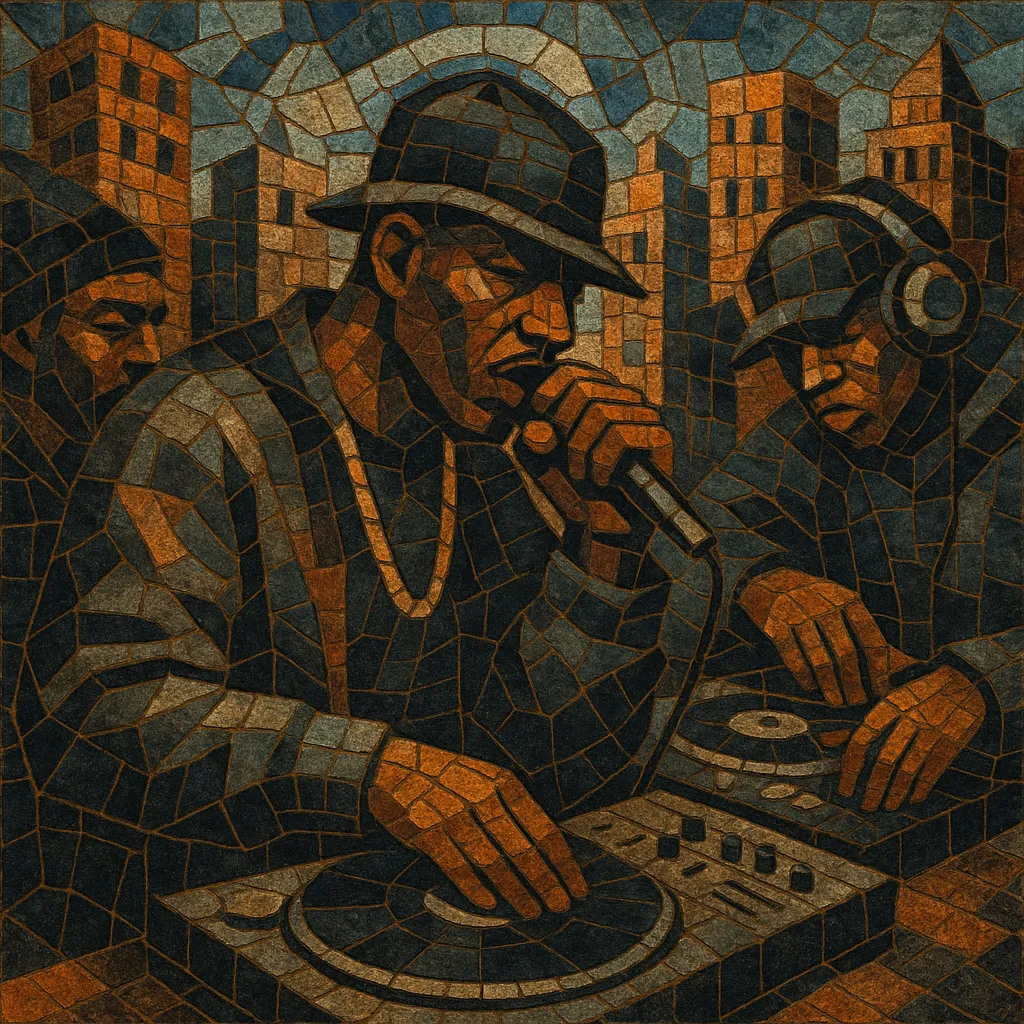
East Coast hip hop is a regional style of hip hop that emerged in New York City and the surrounding Northeastern United States. It is characterized by complex lyricism, dense rhyme schemes, gritty urban storytelling, and sample-heavy production that draws from funk, soul, and jazz records.
Rhythmically, the sound is often associated with "boom-bap" drum patterns—hard-hitting kicks and crisp snares at moderate tempos—alongside chopped breakbeats, basslines, and DJ techniques such as scratching. The approach places the MC’s voice, cadence, and wordplay at the center, while the producer crafts a textured, crate-dug backdrop.
Culturally, East Coast hip hop foregrounds authenticity, social commentary, and competitive MCing, while its crews and collectives (from Juice Crew to Native Tongues and Wu-Tang Clan) helped define hip hop’s golden age and set standards for lyrical excellence and sample-based beatmaking.
East Coast hip hop grew from block parties and sound-system culture in the Bronx during the 1970s. Pioneering DJs and MCs extended and looped funk and disco breakbeats while engaging crowds with call-and-response. Jamaican sound-system practices and toasting informed the early aesthetic, with DJ techniques like cutting, backspinning, and scratching laying the technical foundation.
As hip hop moved from live parks to records, East Coast artists began defining the recorded form. Labels such as Sugar Hill, Def Jam, and Cold Chillin’ fostered careers for groundbreaking acts. Producers like Marley Marl advanced sample layering and drum programming, and crews (e.g., Juice Crew) showcased elite MCs, normalizing sophisticated rhyme schemes and battle-ready lyricism.
This period cemented the region’s reputation for innovation and lyricism. Public Enemy fused political urgency with abrasive, sample-dense production; the Native Tongues collective (A Tribe Called Quest, De La Soul, Jungle Brothers) blended jazz samples with playful yet conscious rhymes; Eric B. & Rakim, Boogie Down Productions, and Gang Starr set technical benchmarks for flow and beat craftsmanship. The boom-bap sound—tough drums, chopped samples, vinyl patina—became emblematic.
The 1990s saw a darker, cinematic turn. Wu-Tang Clan’s raw minimalism reshaped group dynamics and business models; Nas and The Notorious B.I.G. advanced narrative and persona-driven songwriting; Mobb Deep’s stark textures defined a bleak, street-level mood. This era also witnessed the widely publicized East Coast–West Coast rivalry, which intensified commercial and cultural stakes while tragically coinciding with the losses of major artists.
East Coast sounds diversified: Bad Boy popularized glossy hip hop–soul fusions; underground movements (e.g., Rawkus) re-centered lyricism and indie ethos; producers like DJ Premier, Pete Rock, Large Professor, RZA, Q-Tip, and Havoc shaped the sonic palette for a generation. Jay-Z’s rise bridged street poetics and mainstream entrepreneurship, while the region’s ethos influenced global scenes.
The lineage persists through lo-fi, sample-based revivalism and the emergence of New York drill, which blends UK drill sonics with NYC cadences. East Coast hip hop’s core values—lyrical complexity, sample craftsmanship, and DJ/MC interplay—remain foundational to hip hop’s global practice.

